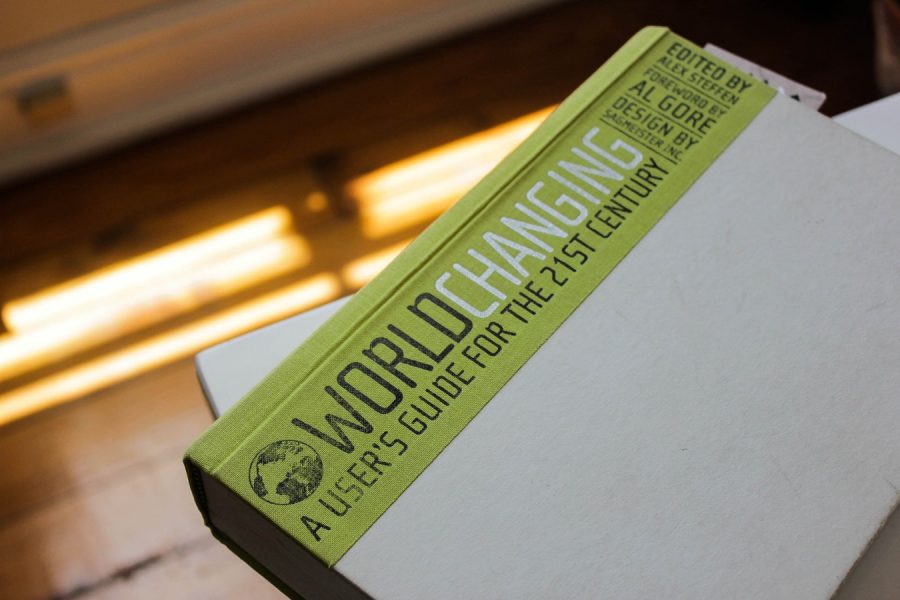A TOK Sit-In
In the world of IB at RHS
December 20, 2018
Foreword:
On December 11th and 12th one of our writers at the RHS Arrow had the chance to sit-in on a few of the Theory of Knowledge (TOK) classes’ final presentations. She witnessed 6 out of 23 groups, with 42 student combinations who presented, as verified by Mr. Collie, Renton High School’s IB Coordinator.
The writer was Emma Austin, Editor-in-Chief of the RHS Arrow. Emma is a part-time IB student, who knew little-to-nothing about the IB Theory of Knowledge class or what the presentations would entail. This was her experience…
Giving perspective
A key thing to note going in was just how nervous these students seemed. Beyond the laid-back mannerisms of the “judges” or “scorers” with reassuring small talk, almost every group or student showed signs of having the jitters. Little did I know, they would be covering some very “critical-thinking” questions with an expected several minutes to elaborate.
Some groups started with rhetorical questions, others with questions directed at the audience, or real-life events brought into the limelight.
One group started by approaching the topic of Seattle’s sex-trafficking and prostitution stats, asking those of us in the room a tricky question.
“How many of you believe prostitution is a problem in Seattle?”
Some of us mumbled “yes,” while one of us muttered “define problem.”
This group was arguing that different values of the public are prioritized differently based on personal experience and past knowledge. They brought up the Rhode Island Experiment that dealt with the decriminalization of prostitution and how the public opinion would, of course, differ from those living through it.
Along with the other issues of stance, they brought up the Seattle Food Desserts and poor people’s perspectives on having little to no access to grocery stores versus the government’s stance on basically equating a 7-Eleven to a full-functioning Whole Foods. They talked about the bad outcomes of such values and beliefs transferring into law.
The points they brought were relevant and taught us that in order to understand someone’s opinion on one topic, we must understand that others’ ideas are shaped by different experiences and processes of thinking.
“Before we criticize people’s viewpoints— we should try to understand why they came to that conclusion in the first place,” they explained.
One student took a different approach in grabbing our attention. This included showing some photos of skyscrapers and tall buildings, following by some questions.
“How do you feel after seeing a tall building and roller coaster?” the student asked.
After showing a second picture, the student asked another question that some would describe as strange.
“Are you attracted to this building?” the student rephrased.
After this, the student brought up something called Object-Sexual or Object Sexuality. This was fascinating, especially fascinating considering she was describing how these people or ‘object-sexuals,’ formed an attachment, sometimes emotionally, to an object.
The student wanted us to understand how these people were seen by society as being mentally insane or strange. It forced us to apply our imaginations and critical thinking to try and understand a world or time that would justify one’s attraction to an inanimate thing.
Turns out, that wasn’t as impossible as most of us were thinking.
She turned to us and questioned, “Do you have any objects you value?”
One fellow student responded with a “yes,” and mentioned a stuffed toy they had for some time.
She asked them, “Would Alex (another student), have the same connection with that animal?”
This put a lot of us into a state of reflection—in many ways, feeling a sense of knowing and realization that was morphed from an unknowing and unwillingness to understand a perspective different from our own.
Lost in communication
The next group had an interesting take at explaining the limitations within language and communication.
They mentioned the troubling use of Google translate among students in Spanish classes. They informed us of how un-beneficial it is because there are nearly 7000 languages in the world that are all unique and have words that can’t be directly translated or don’t exist.
After this short explanation, they proceeded to ask us audience for any random sentence. Then, they had us draw different languages out of a hat, using them to translate that same sentence— several times. The sentence (after being processed), made no sense, and was nothing remotely close to the original.
Their goal was to represent limitations in language and culture, and along with other examples, they interpreted diction and how it shifts meaning as well as the reader’s response.
Emotions take power
The second to last group I sat in on was questioning the effect of emotions and morals taking action and power in the writing of bills and laws.
By bringing up The Pastor Protection Act, The Saudi Arabia Driving Ban, Mormons and polygamy, they worked to teach how personal moral codes can be changed and shaped by culture and upbringing. They say this is because people rely so much on experience to form ideas.
One being an act passed in Texas giving religious officials the right to refuse marrying a gay couple, another being the societal and governmental rules against women drivers in Saudi Arabia, and another being the relation by outsiders that one religion is associated with a sexuality or lifestyle.
They all played an important role in changing the small audiences view on religious text/realistic applications, and empathy for others who think differently because of their values and religions. Also, leaving us to question if the use of morals in the writing of laws is ethical and structurally possible in society today.
False Memory
The last group I had the pleasure of watching had a very interactively set-up presentation. Starting with a video of a car crash, they each gave us a small piece of paper to read after. These papers had the same tweaked sentence.
- “How fast was the car going when it crashed into the other?”
- “How fast was the car going when it bumped into the other car?”
- “How fast was the car going when it scraped the other car?”
Though the video was the same, with the different use of words and impact/lack of impact of each word, it changed the speed each person guessed the car was going. This was an interesting topic: the impact of a word in our memory.
Instances like these can be seen as a situation where you have a lower quality of knowledge, with a distorted memory.
They also brought up something called The Reid Technique, which is a skill used by authoritative figures trying to create a false memory in the subject. This technique has led to many wrongfully being accused. How it works is that they create a statement, that in order to answer, you must conform to the implications of the statement.
For example, “When, you were in the shop, where was Lawrence?”
Thus, if the subject answered the question in anyway, it would place them in the shop. It’s this type of suggestive language that creates memory and makes someone recall something happened—that actually didn’t.
Overall experience and the takeaway
My perspective on how memory, emotion, and reason affects the human experience has certainly been tweaked and reinforced. It’s presentations like these that force you to step outside of the box and think for yourself. I’ve learned that there are many important lessons to be gained from assessing your own bias and the things in your life that shape what you believe and think. I’m grateful for having the chance to sit-in and enjoy the imaginative and reflective places their ideas took me.







